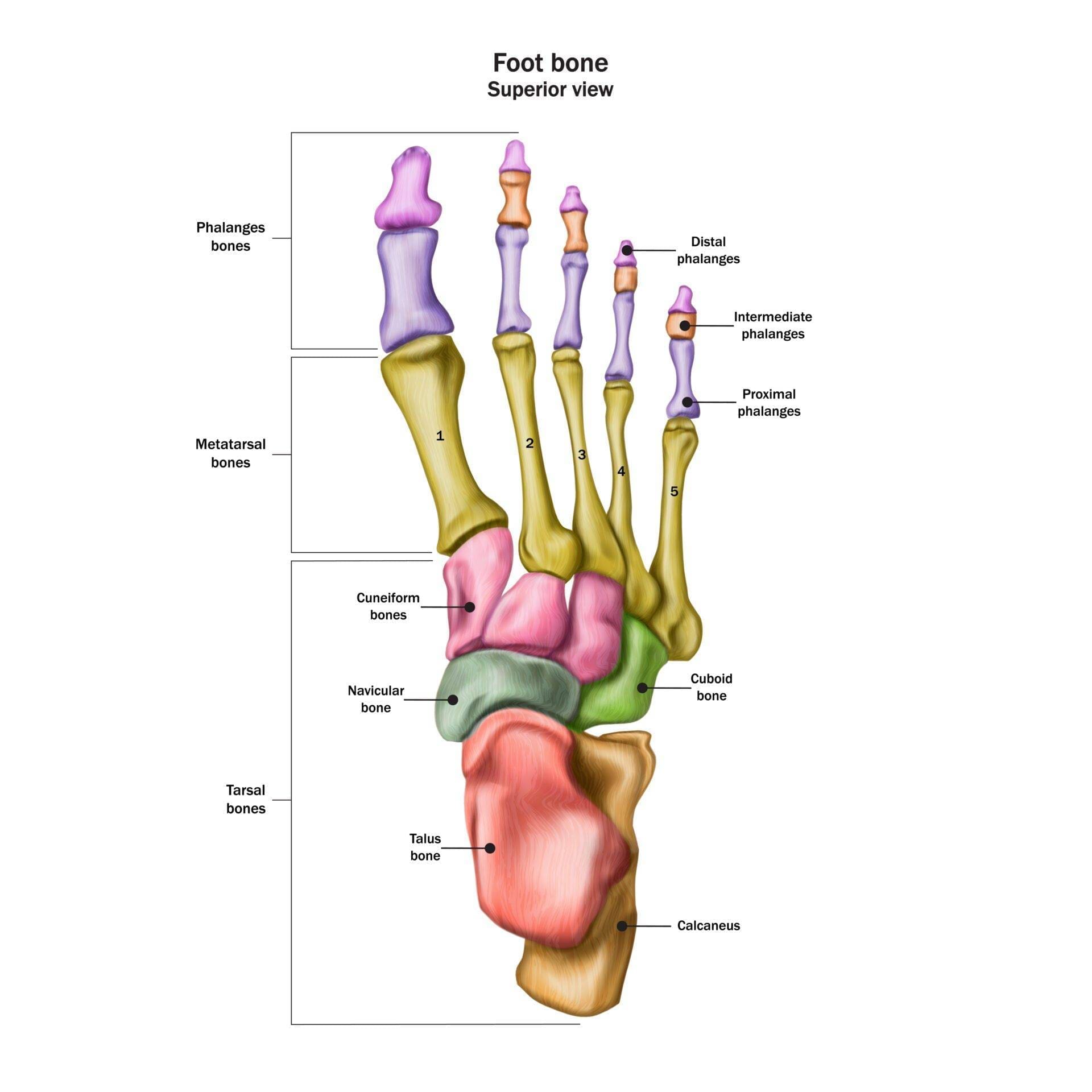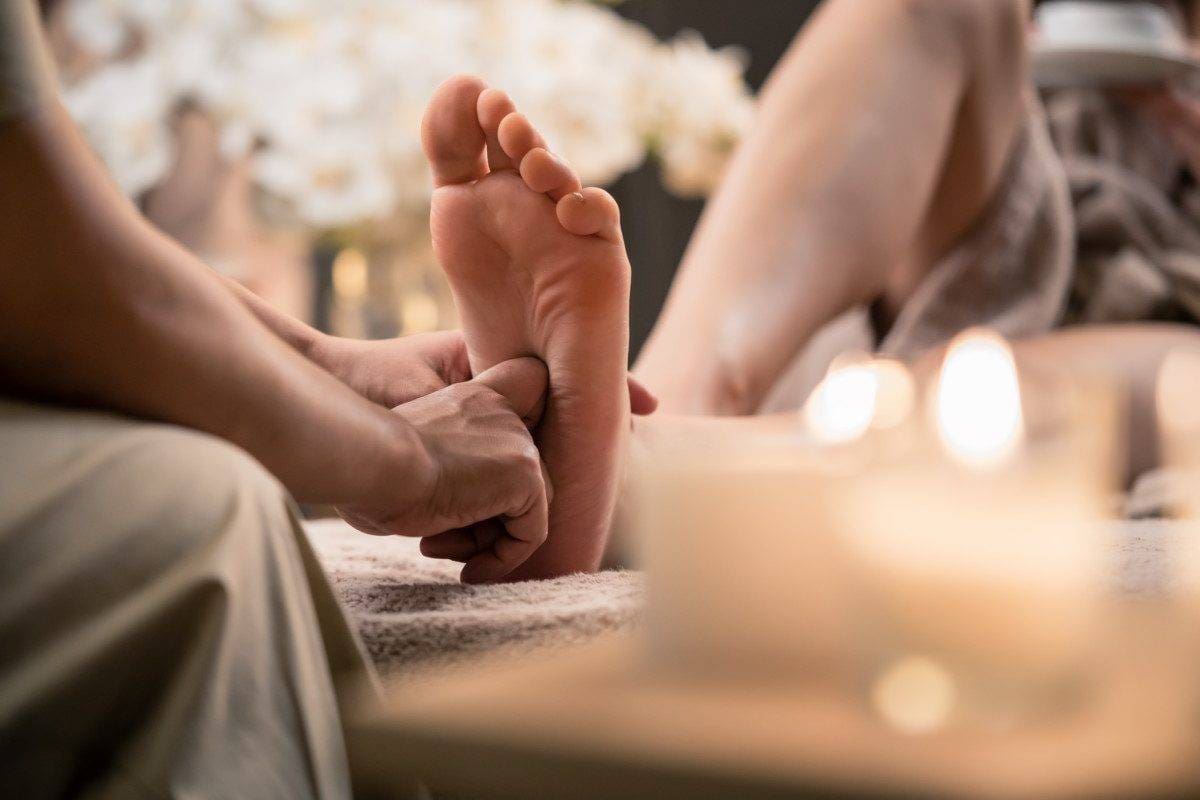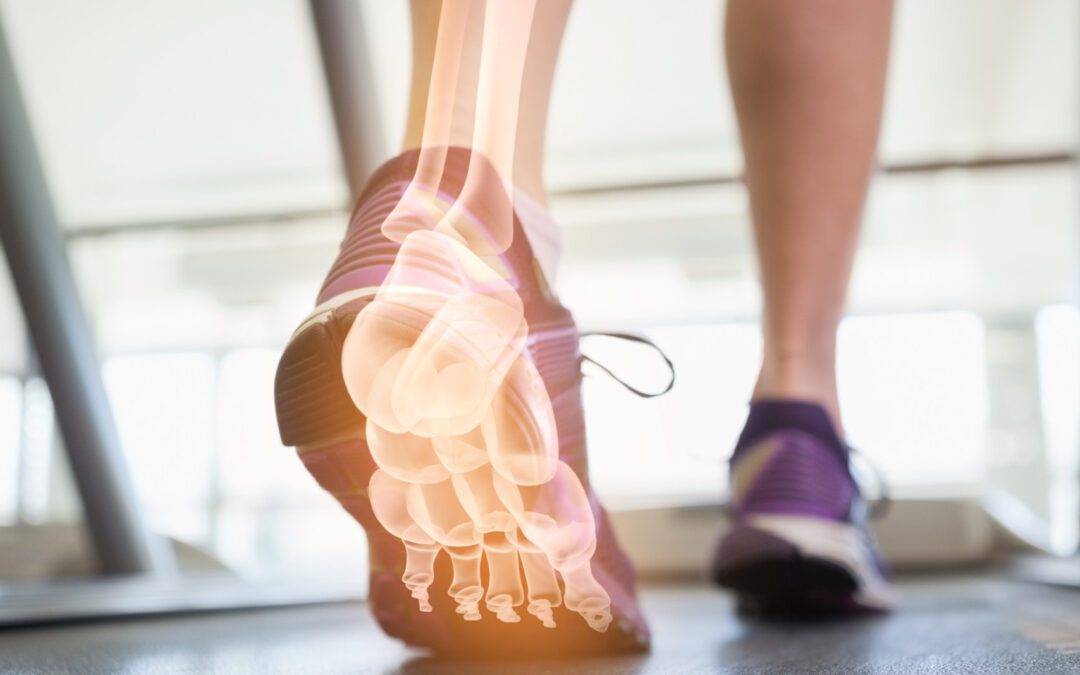By Gillian Scott, RMT
5 Minute Read
So what happens when the stressors placed on your feet from our daily use, such as walking on hard surfaces, wearing poorly fitted or unsupportive shoes, result in dysfunction or even malformation? Pain and stiffness start to become apparent and we take notice of the issue! Understanding the way our feet are built and function can help us treat and then prevent further injury and strain. Let’s take a look at some of what’s happening.

Contrary to what we may think, our feet do not simply rest flat on the ground. The structural arrangement of all of these bones, ligaments, and tendons that have developed to support all of this work has resulted in three arches, which are crucial in giving the feet their required flexibility, shock absorbing ability, and weight distribution capacity. When we are simply standing, the weight of the body is essentially distributed among three points in each foot:
- The posterior inferior tuberosity of calcaneus (heel bone) receives most of the weight.
- The secondary weight bearing point is the head of the first metatarsal, a comparatively large bone, relative to the other bones in the foot. This is what we’d recognize as the largest part of the ball of our foot.
- The third point, which supports the last of the weight, is the head of the fifth metatarsal, which is the outer, opposite side of the ball of our foot from the first metatarsal.
Take a second and stand on one foot, then pay attention to the way your foot unconsciously and automatically redistributes your weight among these three points. You’ll appreciate how quickly and constantly the body is making mechanical adjustments in the feet in order to maintain your balance.

This triad of weight bearing points is partially the result of the three arches we were talking about earlier. This energy-sparing spring theory is at the core of how our feet are able to do what they do so efficiently. Let’s take a look:
- The medial arch, which is the arch that we imagine when we think of our feet, is formed by a number of bones and muscles , and is known for its elasticity due to its height, and its many moving parts.
- The lateral arch is not quite as high as the medial, and although it can be plainly seen on the skeleton, it is not obvious simply by looking; The space below this arch is actually packed with muscles. Where the medial arch offers flexibility, the lateral along with these muscles provide solidity and strength.
- The third arch, known as the transverse arch, is most visible around the middle of the metatarsals. It is slightly higher on the medial (inner) side of the foot, and among its many functions, it serves to create stiffness and strength in the mid foot, which in turn improves energy efficiency in walking and running.

When a podiatrist, chiropractor, physiotherapist or other primary healthcare provider refers us to a registered massage therapist for treatment of the feet, what can we expect? To start, the condition to be treated will be assessed through:
- Observation and palpation of the affected areas, noting for the presence and location of tenderness.
- Assessing for signs of local heat or cold.
- Noting signs of edema.
- Assessing the condition of the skin.
- Looking for the presence of myofascial trigger points, which are musculoskeletal & neuromuscular conditions easily overlooked without keen attention to detail.
Treatment plans and frequency can then be discussed, as well as the many self-care options and supports such as hydrotherapy and remedial exercises.


